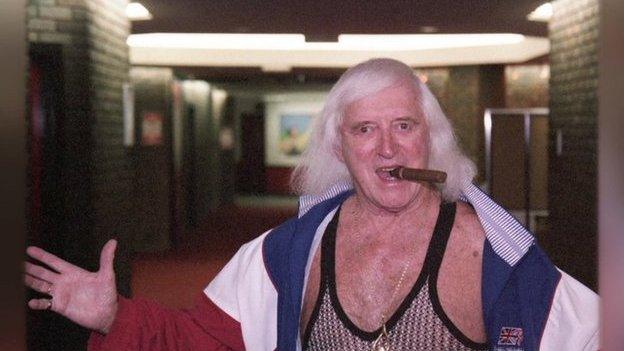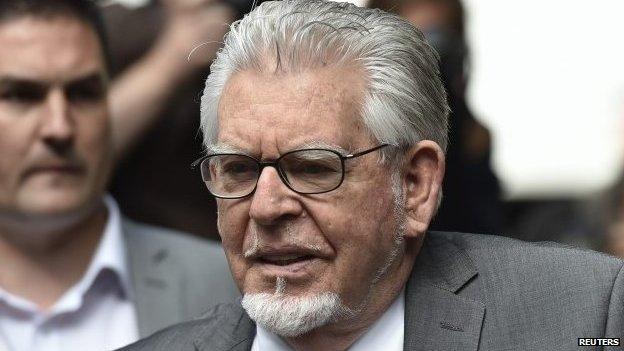Full glare now shines on child abuse
- Published

Jimmy Savile was a persistent offender
It started with Jimmy Savile, who knows where it will end?
Wednesday's figures are in effect a printout from the computer database run by Operation Hydrant - the national police team which has the task of co-ordinating investigations into what it calls non-recent child abuse.
They make plain that the police have a new and growing type of crime to deal with.
Historical child abuse may have happened decades ago, but it is growing, because it is only being reported to police now.
Non-recent cases are predicted to have risen 165% by the end of this year compared to 2012.
The increase is much less, 31%, for cases which happened within the past 12 months - though they are still greater in number.
Why? In the 20th Century it was not unusual for children disclosing abuse to be disbelieved, and even laughed at.
Among police officers there was often a view that a single allegation of abuse had to stand up on its own.
Weight of numbers
Successful prosecutions of abusers in recent years have been built on a different strategy - corroborating the stories of many victims.
Sheer weight of numbers persuading juries.
Lawyers who deal with abuse cases say in the past, naming a well-known person as a paedophile would make it far more likely the case would go nowhere.

Rolf Harris was jailed for nearly six years
There is plenty of evidence now of a major shift in thinking among police forces.
So much so that the police can now reveal they are now investigating 261 prominent men. (And they are all men.)
In recent years celebrities have been jailed, former military chiefs have been questioned, and teams of officers have been sent to search the homes of household names.
In December a senior Metropolitan Police officer overseeing the investigation into the allegations of a man in his 40s of abuse at the highest levels of society, said the story was "credible and true".
It was a controversial statement and critics have begun to talk of a witch hunt, but the Met has not withdrawn it, and among other statements, it demonstrates the desire among police to be seen to be taking abuse survivors' stories seriously.
Tough challenge
Yet investigating this sort of abuse is tough.

Operation Hydrant:
More than 1,400 suspects, including politicians and celebrities, have been investigated by police investigating historical child sex abuse allegations.
The figures were revealed by Operation Hydrant, set up by the National Police Chiefs' Council.
It explores links between child sex abuse by "prominent public persons".
Of the 1,433 suspects identified, 216 are now dead and 261 are classified as people of public prominence, with 135 coming from TV, film or radio.

Modern detective work often relies on the digital trail that follows us all around - mobile phone records, CCTV images and online behaviour.
None of that is available to the abuse investigations.
Victims' accounts will lack detail - because of the age of the victim when it happened and the time that has passed since.
Many will be unable to discuss what has happened to them.
When the subject of the allegation is famous, investigators always have to question whether the fame has unfairly attracted the accusation.
Police forces tend to take a "'slowly but surely" approach, but they still need lots of cops to do the job.
One change in society has helped. The number of what might be termed 'old-style crime' - burglaries, robberies and violent crime have fallen.
Simon Bailey, the chief constable of Norfolk, who leads Operation Hydrant said his own force only deals with about four burglaries a day, so resources can be reallocated.
That can pose its own problems.
Grizzled murder squad detectives may not easily transfer to the job of teasing out a story of prolonged childhood abuse from a victim.